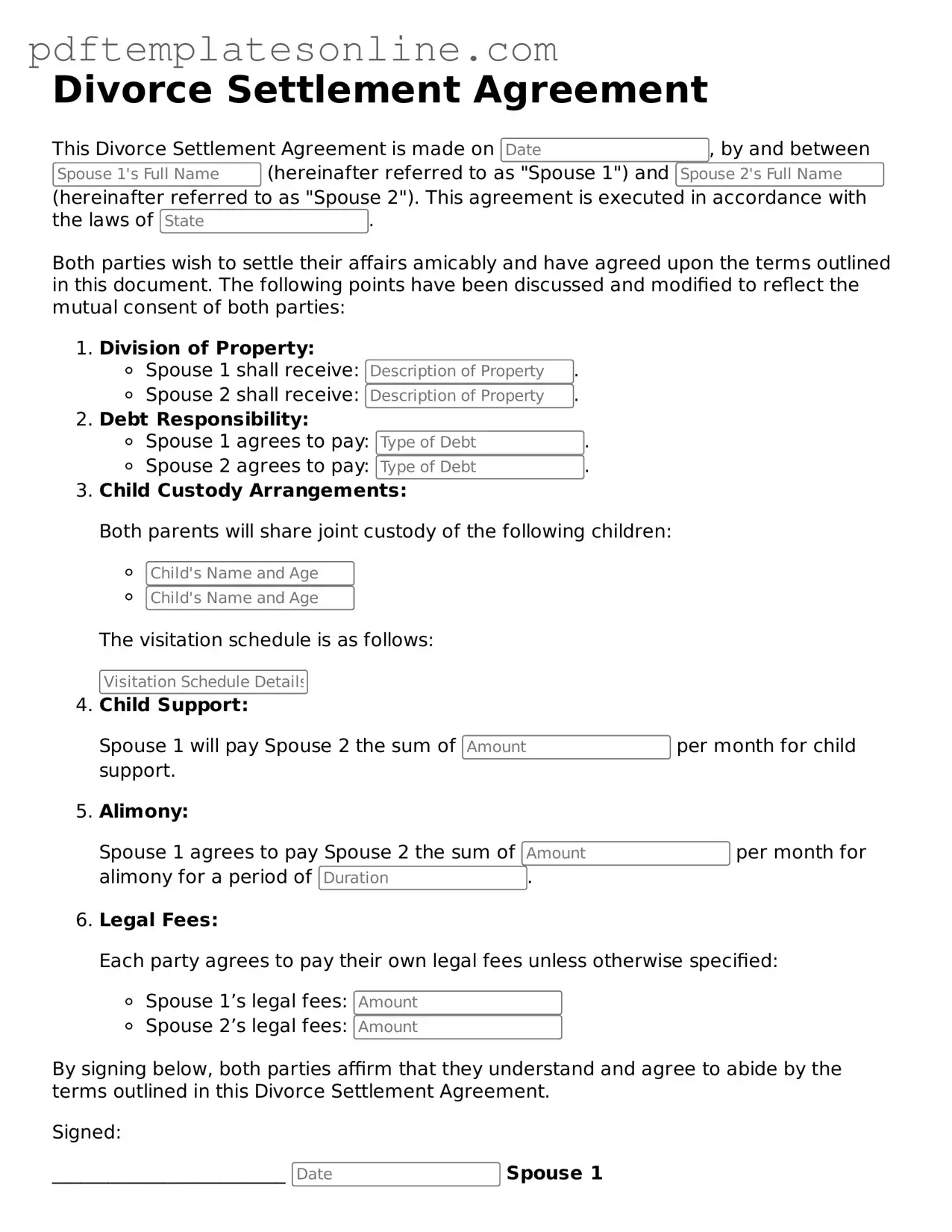Filling out a Divorce Settlement Agreement form can be a daunting task. Many people find themselves making common mistakes that can complicate the process. One frequent error is not fully understanding the terms of the agreement. It’s crucial to comprehend what each section means before signing. Rushing through the form often leads to misunderstandings down the line.
Another mistake is failing to disclose all assets and liabilities. It’s essential to list everything, from bank accounts to debts. Omitting even a small item can lead to significant issues later, including potential legal consequences. Transparency is key in ensuring a fair settlement.
Many individuals also overlook the importance of specifying child custody arrangements. This section requires careful consideration and clear communication. Vague terms can lead to disputes in the future, making it vital to outline the details thoroughly.
People often forget to consider tax implications when dividing assets. Certain assets may have tax consequences that can affect the overall value. Consulting with a financial advisor can help clarify these issues, ensuring that both parties understand the long-term effects of their decisions.
Another common pitfall is not including a plan for future expenses, especially regarding children. It's essential to address how future costs, like education or medical expenses, will be handled. This foresight can prevent misunderstandings and conflicts later on.
Some individuals make the mistake of using vague language in the agreement. Clear and specific terms are necessary to avoid ambiguity. If the language is unclear, it can lead to different interpretations and potential disputes in the future.
Additionally, neglecting to review the agreement with a legal professional can be a costly error. Having an attorney review the document ensures that all terms are fair and legally sound. This step can save time and money in the long run.
People sometimes rush to sign the agreement without fully understanding it. Taking the time to read and comprehend each section is essential. Signing in haste can lead to regrets and potential legal issues later on.
Another mistake is not keeping a copy of the finalized agreement. Once the document is signed, it’s crucial to have a copy for personal records. This ensures that both parties can refer back to the agreement if any questions arise in the future.
Lastly, failing to update the agreement as circumstances change can be detrimental. Life is unpredictable, and as situations evolve, the agreement may need adjustments. Regularly reviewing and updating the settlement can help maintain fairness and clarity.
